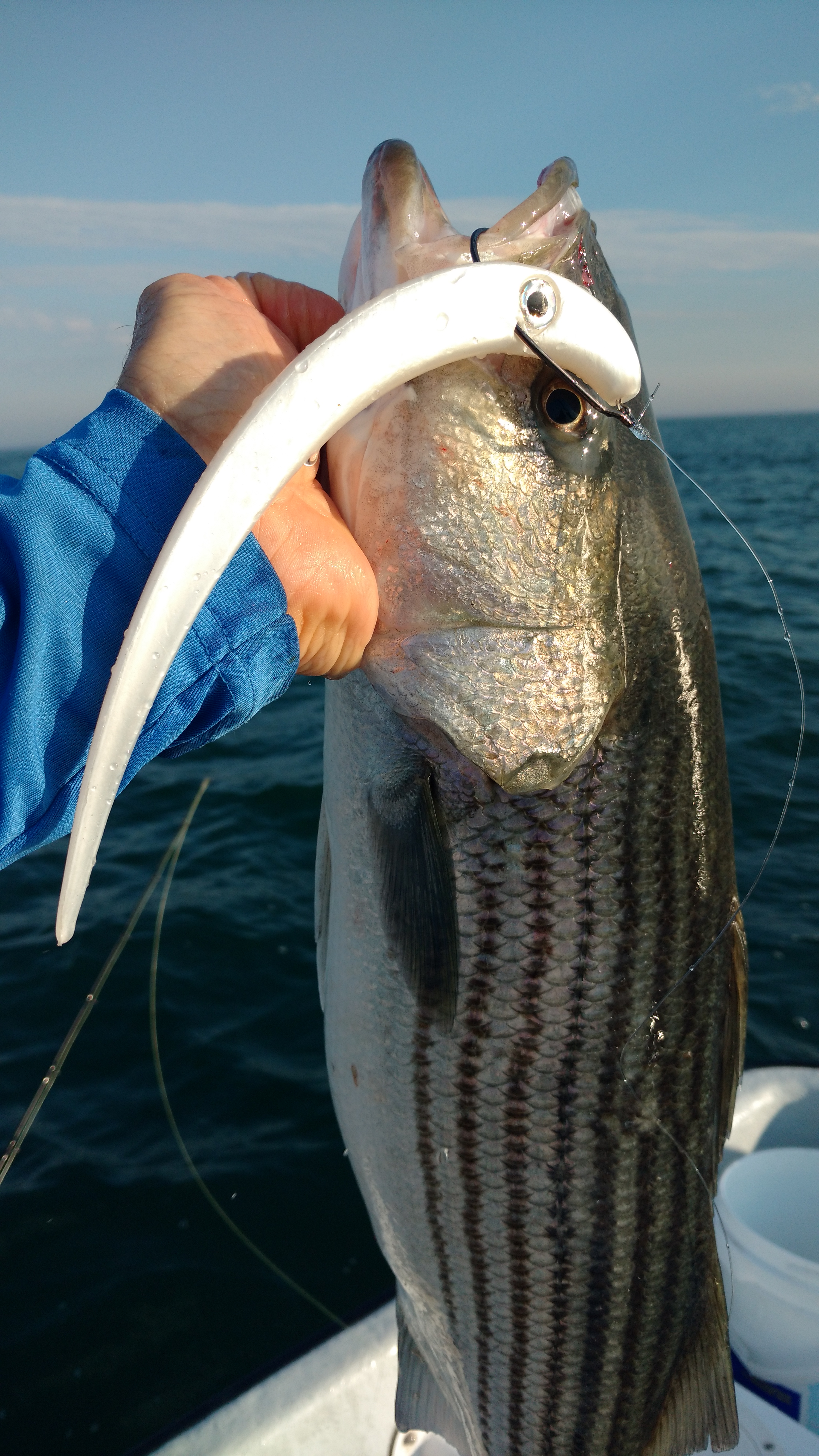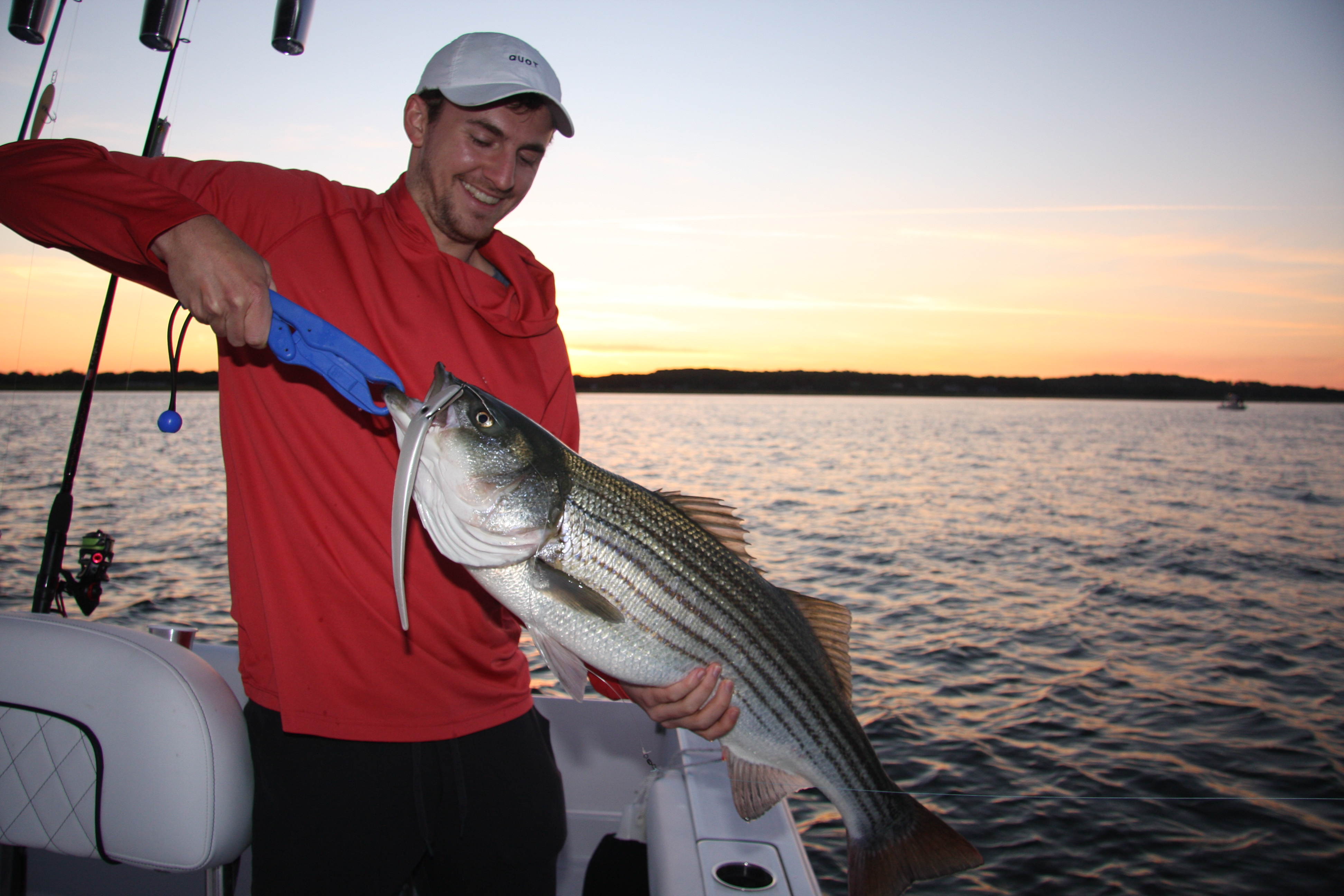A Soft Approach
Posted by Capt. Tom Migdalski on 4th May 2021
A Soft Approach
Spring is the Time to Turn to Soft Plastics
Soft plastics have evolved over the years, offering anglers many advantages over traditional hard-bodied lures. Hard lures don’t possess the same supple texture as real prey, which hampers movement and feels unnatural in the mouths of gamefish. When a fish strikes a soft plastic, the angler has more time to set the hook before the predator rejects the object as a non-food source.
To create soft lures, manufactures pour heated liquid plastic into molds that replicate the desired shape of specific forage such as worms, baitfish, slugs, crustaceans, and squid, among others. Picking the right soft plastic sometimes defies logic: If predators only attacked the most natural-looking presentations, all soft baits would derive from the same molds, use only the same natural colors, and all replicate each other.
Like most lures, different soft plastics work better in different conditions; for example, some plastics are best for surface fishing in rough seas, some for fishing in deep currents, and some for fishing in calm conditions. Others work better in clear water while some excel in cloudy water. The rigidity of the lure is influential in detection—the softer, the more it absorbs vibrations and therefore the more discreet it is, playing to its strength—visibility—which is a lifelike movement with less effect on the stimulation of the fish’s lateral line because there’s less “bounce-back” than with a hard lure.

Vibration isn’t always necessary for success. In shallow, clear, calm water or in high-pressure areas, fish become weary and wary of vibrations, and then only target more natural bait. In such conditions, selecting a softer, longer plastic like the Game On! Big Occhi, would give an angler an advantage. A splashy hard-bodied lure or stiff soft plastic with a short, wide tail causes excessive and unnatural water movement and may be rejected in tranquil or high-traffic areas.
Calm water also forces anglers to cast farther—away from noise—where fish are less spooky and more receptive. Noise that anglers create when sloshing along the shore or working from a boat, for example, make fish skittish or drive them away, as do outboard motors. A solution for fishing such areas with a lot of external activity is to approach discretely and use soft plastics with enough weight and aerodynamics to cast greater distance.
Adding a lead head to a soft plastic increases casting distance, especially during windy situations. The Big Occhi
excels in such conditions. With its large body, the Occhi provides additional mass for long casts, and the tapered keel or “V shape” keeps it level as it cuts through the water. This large plastic mimics an eel swimbait, as well as a wide variety of struggling baitfish. Available in 10-inch and 7-inch models, the Big Occhi is perfect for a variety of top-water rigging methods. A defining feature is its over-sized eyes, which reflect light and draw attention because predators key on the eyes of prey such as squid or menhaden.
“My favorite way to fish the Big Occhi,” says Dan Orefice, an expert saltwater angler and owner of Game On! LLC, “is topwater rigged with our screw-in swimbait hook. I like a 5/0 for the 7-inch Occhi and a 7/0 for the 10-inch Occhi. I use a wide-gap swimbait hook with a screw-type fastener placed into the nose of the bait, which allows the lure to keep a lot of its action. When rigged unweighted, the Big Occhi has a great walk-the-dog action and will generate spectacular topwater strikes.
“Another option is to rig the Big Occhi with a weighted swimbait hook to get the lure deeper in the water column. Our weighted screw-in swimbait hook works great for this and adds distance on your cast. Adding a jig head is also an option, you lose a little action, but the added weight drops the lure farther down in the water column, especially in a strong current.
“All the colors produce action,” concludes Orefice, “but the pearl white seems to be the color of choice for striped bass and false albacore. The brighter colors like limoncello and pink work well with fluke and black sea bass.”

How to Fish Them
Techniques for fishing soft baits shouldn’t remain static or consistent unless the bite is red hot with one type of retrieval. The same lure repeatedly tossed to the same location with the same technique stagnates in its effectiveness and can spook fish. Instead, try fan casting an area, and if you feel it’s a fishy spot but without takers, change one of the variables of the soft plastic like its size, shape, color or speed and method of retrieval. Take advantage of creating better reaction and strike opportunities by using different styles of fishing, changing lures and techniques, and even target a wider range of species.
“I like to rig the 10-inch Big Occhi with a 7/0 unweighted screw-in swimbait hook,” says Capt. Chris Elser (ct-fishing.com), a top charter captain in western Long Island Sound for dozens of years, “because I find the most productive way to fish it is a walk-the-dog fashion in the surface film. This is deadly for big blues during their annual pre-spawn finning events in deep water at mid Sound during May and June. I also cast it rigged the same way to the outer edges of bunker schools, and last year this produced better than livelining real baits.
“There are many colors available, but the only color I find relevant is white because it matches the color of the belly of baitfish, and when fishing a surface lure, the fish can’t see the color on the top of the target.
“The 7-inch Big Occhi works well using a ½-ounce jig head when predators are suspended, particularly for resident spring stripers, such as what occurs in April and May in the Housatonic River. I also fish the 7-incher using a 5/0 screw-in weightless swimbait hook when bass and blues are feeding on sandeels in shallow water. When fishing the 7-inch Occhi with the swimbait hook, it’s important to rig it using a non-slip loop knot to achieve optimal action. I also rig the 10-incher the same way because it allows more freedom of movement with a side-to-side action while working the lure with a rod-tip-up retrieve.”

Tackle Talk
“I find that a fast-action, 10- to 20-pound class, 7-foot spinning rod like the Lamiglas Tri-Flex or similar rod is the ideal setup to fish the Big Occhi plastics,” says Elser. “When targeting big bass and gator blues, I use 30-pound superbraid when fishing with the 10-inch Big Occhi, and I use 20-pound superbraid with the 7-inch Occhi to enhance casting distance.
“I tie a double Albright knot to create a smooth connection from the braided line to a 3-foot section of 30-pound mono for the 10-incher, and I use 16-pound mono leader when casting the 7-incher. I’m happy to charter any anglers who would like to learn and refine their soft plastics fishing techniques.”

